Article and Video by Colette Nichol, Solo Filmmaker and Story Strategist
Estimated reading time: 12 minutes
In this video and post, you’ll get a quick overview of the most critical gear you need to get started with iPhone filmmaking or making videos and films with ANY cell phone. If you have a smartphone, then you can start making films and videos today. Mobile filmmaking is one of the easiest ways to get started as a solo filmmaker because you don’t have to wait to get a camera. You’ve gone one in your pocket!
First, watch the video to learn the basic kit you’ll need to get started and some super helpful time-saving and money-saving tips. Then review the post for some extra details.
CLICK HERE to Subscribe to the Channel for more videos on Filmmaking, Creativity, Storytelling, and Tips on how to make your most important creative dreams and goals a reality.

iPhone and Mobile Filmmaking is for Everyone!
I’ve been a solo filmmaker since 2014. But when I got started, I was using a DSLR to create films. That was the norm back in the day. But these days, you can use your cell phone to get started. Whether you’ve got an iPhone or some kind of android smartphone, you can get started using what you have.
Now, if you’re just getting started, watch the video above to find out the MOST important filmmaking gear for cell phone filmmakers.
While it’s not as complex as you might think, there are some key things that’ll slow you down if you don’t have them taken care of right away.
Get started by watching the video to find out what tools you need to get started making films. Then review the rest of this post for some bonus tips.
In This Post:
iPhone Filmmaking for Everyone
Is an iPhone Good for Filmmaking? IS AN IPHONE GOOD FOR FILMMAKING?
How do you film in a cinematic way with the iPhone?
Which phone is best for making videos?
What gear do you need in your iPhone filmmaking kit?
7 Other Mobile Filmmaking Gear and Accessories
Plan Your Audio Set Up PLAN YOUR AUDIO SET UP FOR IPHONE FILMMAKING
You May Need an Additional Lens
Which phone is best for filmmaking?
Pros and Cons of iPhone Filmmaking
Is an iPhone good for filmmaking?
Sure! In fact, any phone or camera that you have is good for filmmaking. Remember, the camera you have is the best camera. A lot of people wait to get started. They’re waiting to have the PERFECT camera. Does that sound familiar?
No need to wait! Get started with what you have. Then, you can expand your gear later.
Also, if you’re about to upgrade your cell phone, then it’s worth looking at the new iPhone 13 pro. This is an especially good option if you’re going to get financing from your cell phone company. iPhones have the best footage out there, and the new iPhone Pros have three lenses built-in, which means you can get way more styles of shots without a struggle. While the regular iPhone 13 had dual-lens i.e. two lenses built into the camera.
In addition, the iPhone color science keeps getting better and better. So if you want to start shooting footage that looks outstanding with your cell phone, an iPhone is probably the way to go.
How do you film in a cinematic way with the iPhone?
First, remember that the basis of cinematic films is the cut. In other words, you need to be creating shot sequences if you want your videos to look cinematic. Start with a wide shot that shows the whole scene. Then go in for medium shots and close-ups. If something in the scene is important, grab an extreme close-up.
Try making a shot list in advance so you know you’re going to get the shots you need.
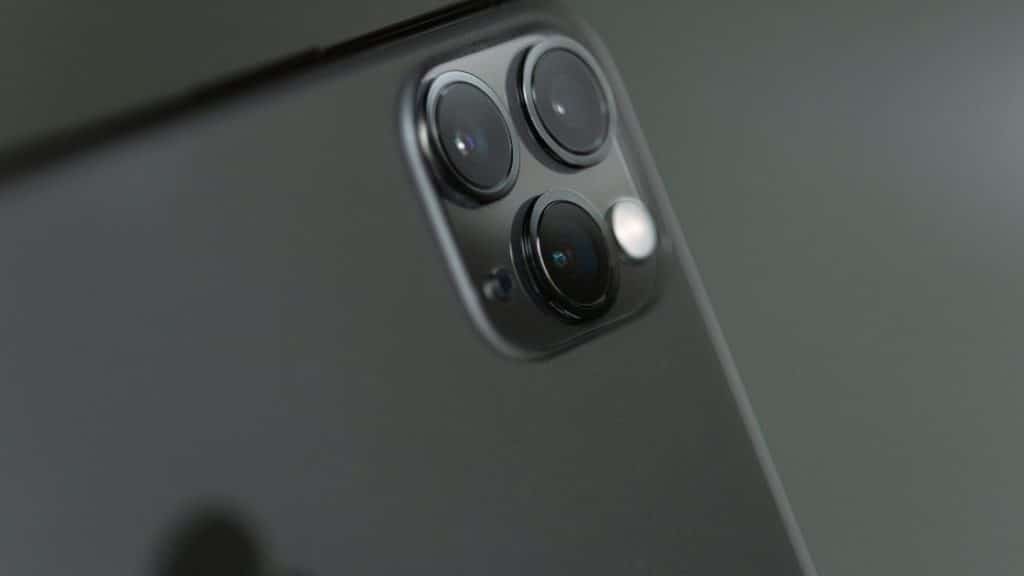
Which iPhone is best for making videos?
If you’re in the market for an iPhone to make videos, don’t overthink it. Just buy the latest iPhone. If you have more cash, buy the Pro version. And while storage is nice, if you need to save money, don’t waste it on storage. You should be taking your footage off your camera regularly anyway not using your camera as a hard drive.
So as long as you have 125 GB of storage on your phone, you’re more than okay.
What gear do you need in your iPhone filmmaking kit?
Here are the basics that you’ll need if you want to START and FINISH a film of any length:
- Cell phone (of any kind).
- Tripod (gorillapod, monopod, or legit tripod).
- Tripod mount.
- Gimbal such as DJI OM5. You only need this if you’re going to be doing a ton of moving shots right away. You can’t use this gimbal for everything. You’ll still need a tripod. So only splurge on this if you know you need to capture lots of moving shots or decent-looking selfie videos.
- Computer for editing – 8GB RAM minimum.
- Software for editing.
- External hard drive for backups (always have two copies of your footage! at a minimum).
- Digital data transfer method i.e. a way to get your footage from camera to computer and external hard drives.
- Audio recording kit (this is a whole world of its own and there’s lots to say about this). So keep reading for more audio hardware tips.
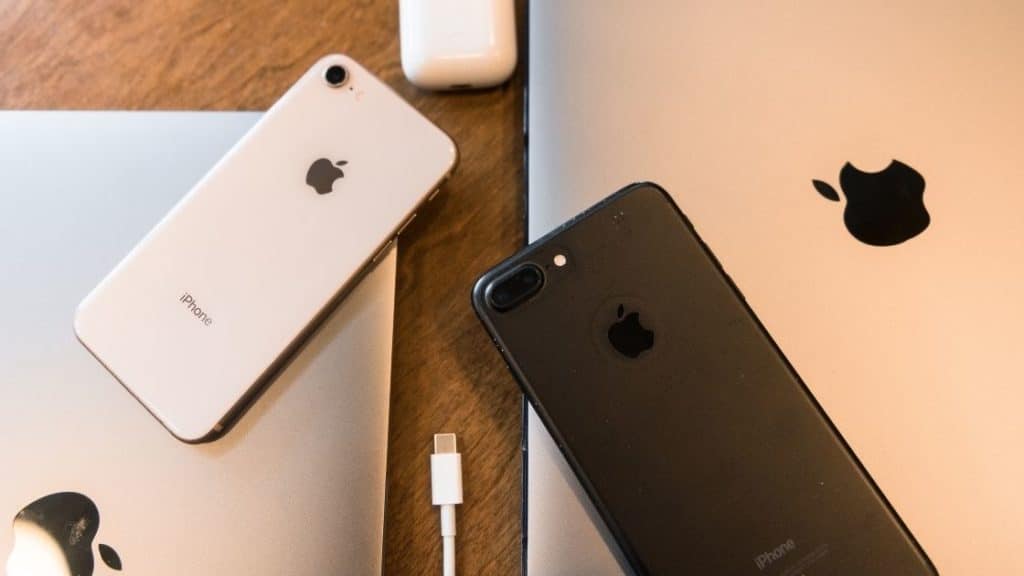
Other Filmmaking Gear and Accessories
So what else might you use when making films with your iPhone? Here are some extras that you don’t need to get started, but which you might choose to use later:
- CAGE – An iPhone Cage can help you if you want to do quick and dirty handheld or mount a mic or small light. SmallRig has a decent mobile cage for $40. Or check out this one by Ulanzi for $20.
- LENS – Moment 58mm telephoto lens, good for iPhone 11 Pro, Pixel 4, etc. If you’re using an iPhone 13 Pro you won’t likely need this. If not, it might be worth the $130US. This will allow you to get tighter shots (close-ups) without having to do that awful digital zoom dance that kills all your resolution! (See below for Moments propaganda film.)
- MIC – Condenser mic with lighting connector to get better audio straight into your cell phone. This one by Shure, the MV88, for $150 is what I would choose if I were in the market. Or you could get the Rode Video Mic Me-L for $110, which also works with the lightning connection. But don’t forget that you still need to get your microphone close. So this isn’t going to work for interviews where the camera is more than 3 feet from the subject.
- BUDGET LAV MIC – Lav mic for iPhone if you need a budget option to do interviews the one by Pixel for $40 could work.
- HIGH-QUALITY LAV – For a higher quality lavalier set up, check out the Rode Wireless Go Microphone system which costs $200. Meanwhile, a mid-range lavalier set up for iOs or Android is the $88 Saramonic Digital Lav.
- EXTERNAL RECORDER – Finally, if you’re ready to go pro with your audio, you can use an external recorder like a Zoom H4, H5, or H6. They range from $200-$500.
- LIGHTING – Lighting for the film is a huge topic, so if you want to learn more about cinematic lighting, check out the epic blog post on the topic.
Plan Your Audio Set-Up for iPhone Filmmaking
One of the most overlooked areas of filmmaking is the audio setup. When you’re first starting out, you can just use one of your old cell phones as your recording device. But as you do more complex shoots, you’ll need something specific to what you’re aiming to shoot.
Make sure you buy gear that you’ll use on 80-90% of shoots when you’re first starting out.
Below is Rode’s advert for their Wireless Go. Remember when watching ads like this that you need to know what you’re going to be using something for first. Then you need to check the spec sheet to see if it’ll work with your iPhone. But whatever you do, don’t let audio be something you ignore. For most projects, audio is half that battle.
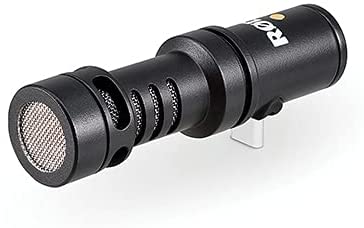
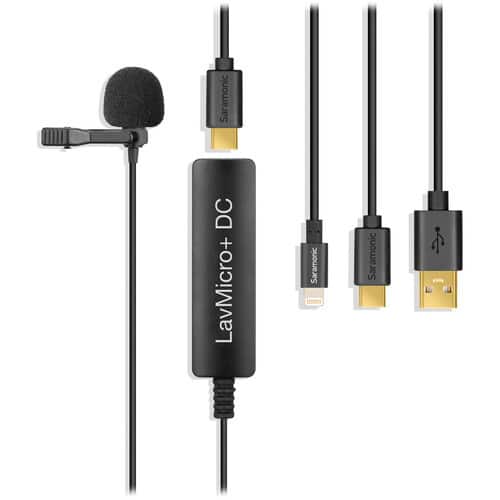

You May or May Not Need an Additional Lens for Your iPhone
If you’re using one of the latest iPhones that have three built-in lenses, then you probably won’t need an external lens.
But if not, then to do close-ups or medium shots, you’ll need a portrait lens like the one featured below. While I’m not the biggest fan of this advert, it does show you (somewhat) the benefit of an additional lens for your iPhone or Android phone when filmmaking.
When you’re not doing cell phone filmmaking, your lens choice is one of the most important decisions you make as a videographer or cinematographer. With cell phone filmmaking, you can’t be as picky. But it’s nice to know that there are options for you if you want to push yourself beyond the basic abilities of your camera.
>> Related Article: What’s the Best Lens for Video?
iPhone Filmmaking Basics
Why shoot with a smartphone?
Nope! A slider is rarely used in filmmaking. What does it do? It allows you to have your camera move (or almost glide) in a nice clean slow pan across a scene. It might be necessary if you’re doing very specific work like high-end real estate films. But watch any movie and see how often the camera slowly pans across a scene. Then ask yourself how necessary that pan even was to the meaning of the film.
So no, you don’t NEED a slider. If you want to try one out for a project, just rent one. Then decide if you’re going to use it enough to warrant the purchase.
Which phone is best for filmmaking?
Well, that question is easy. First, whichever phone you have in your pocket is best! But if you’re looking to upgrade go with the best iPhone that your budget will allow. The iPhone 13 Pro is the best on the market right now if you’re planning on doing cell phone filmmaking. Why? The three built-in lenses and excellent color science.
In general, more filmmaking gear seems to be made for iPhones, so that’s another reason to go with an iPhone if you’re planning on doing cell phone filmmaking. Additionally, some filmmaking apps are only made for iPhones as most people in the industry use Apple not Android.
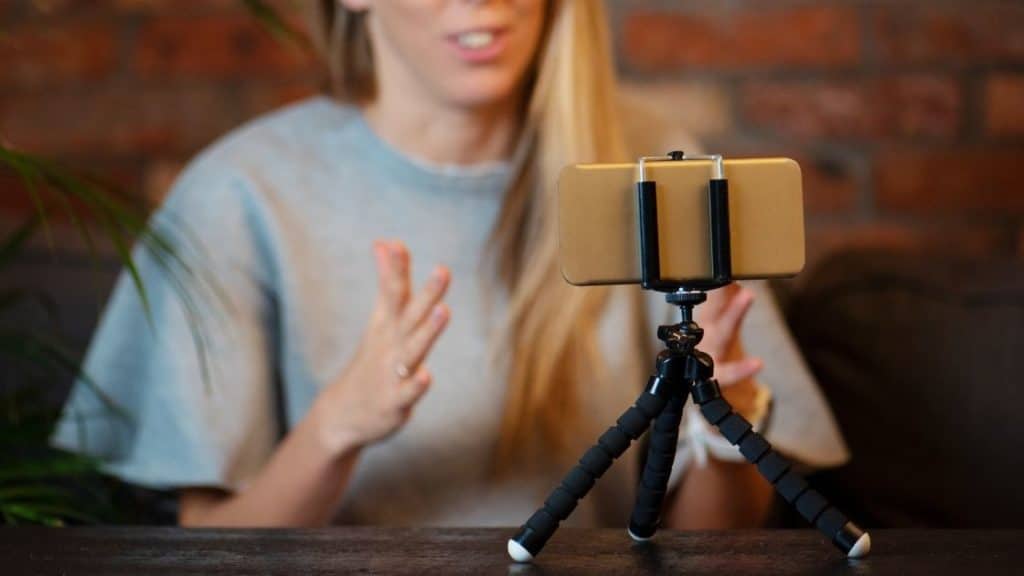
What are the pros and cons of iPhone filmmaking?
The pros are that the cost of entry is low compared to other filmmaking toolkits. On top of which everything is lightweight and easy to bring with you wherever you’re going.
If you’re doing personal projects and creating content for a YouTube channel or your own business, this is perfect. However, if you want to build a business where you charge for your work, an iPhone’s not going to cut it. You can’t show up at a client shoot sporting your iPhone.
Another downside of iPhone filmmaking is simply that it’s harder to nail exposure if you’ve got extreme lighting conditions. However, if you use Filmic Pro and are able to have more control over exposure, this will definitely be something you can manage.
When you’re first getting started, you should absolutely use your cell phone.
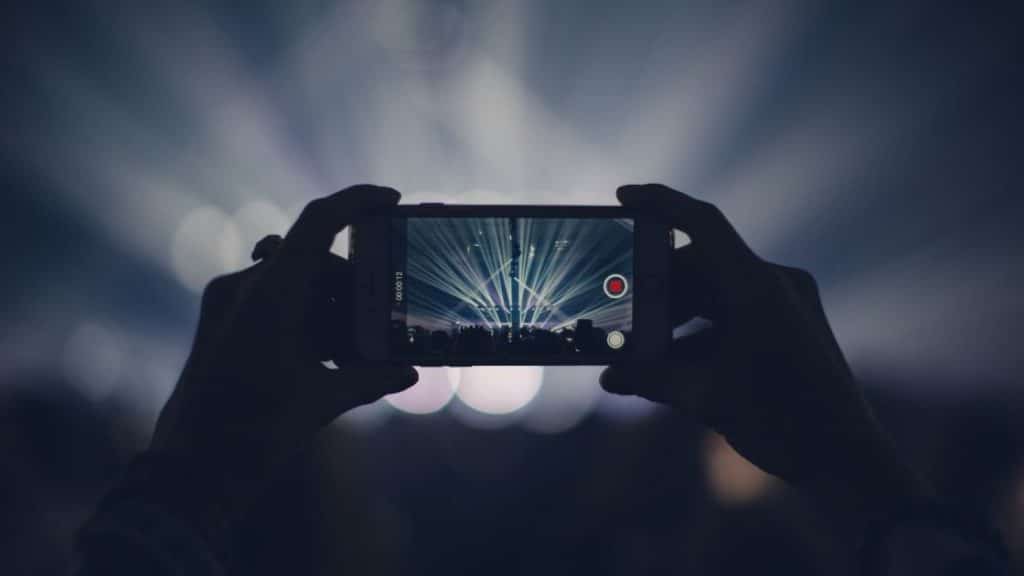
What to Watch Out for When iPhone Filmmaking!
- CONTRAST – Watch out for super high-contrast light also known as high dynamic range. This is lighting where you’ve got super dark shadows and really bright highlights. Your cell phone probably can’t handle this. Try to shoot in light that’s less contrasty until you’re comfortable manipulating your image.
- LOW LIGHT – When shooting indoors, get near the windows. There’s rarely enough light inside to shoot with a cell phone and get nice imagery. You’ll need lighting in the future.
- NOISY AUDIO – Audio matters. A lot. Start out with casual silent-ish films. Then get into audio later. But know that audio quality is important and something to invest in when you’re ready.
- THE CUT – Editing is THE MOST important part of crafting a good film or video. So start editing today!
- COMPUTER COMES FIRST – Have a computer with 8GB RAM and you should be okay with most video editing at 1080p. If you want to edit 4k, I recommend a computer with 16GB RAM and a Solid State Drive if possible or a fusion drive. FYI, 4k and 1080 refer to the resolution of the footage which determines roughly how “sharp” it appears to the human eye when we look at it from various distances.
- BE A STORYTELLER – Focus on your craft, artistry, and honing your eye. Focus on storytelling. Yes, gear matters. But only because it helps you tell a story. So become a storyteller, not a gear head.
So what’s next? Ready to start?
If you want to get started with filmmaking, there’s no time like TODAY. If filmmaking is something you’ve been dreaming of then please know that it IS within your reach. You need a little bit of gear, sure. But mostly you need persistence and passion. If you’re willing to put in the time and effort to get good, then you can take this art form in a ton of different directions, from starting your own business to creating a content channel to being a freelance filmmaker. You decide.
But first, you’ve got to get the skillset!
Looking for more? Find out your filmmaker archetype below.
Learn Filmmaking and Get the Gear Guide
If you’re interested in learning filmmaking, check out the Solo Filmmaking Mentorship Program I created for aspiring filmmakers and video creators. It usually goes live once per year. So I recommend getting the Story Envelope Filmmaking letter which comes out a couple of times per month. That way, you can get filmmaking tips for free and find out when the filmmaking course is going live again.
Also, before you go, grab the Solo Filmmaking Gear Guide and Checklist for Beginners.

About the Author
Hi! I’m Colette Nichol. I’m a solo filmmaker and story strategist based out of rainy Vancouver, Canada. I’ve been making videos and micro films for small businesses and global brands since 2014.
Plus, I LOVE to help aspiring filmmakers pursue their dreams and start making films. This blog is designed to help you gain the knowledge you need to become a filmmaker.
If you want more, get on the waitlist for the Story Envelope Academy Solo Filmmaking Mentorship Program. It opens up one time per year and is the best way to become a filmmaking or video pro fast!
CLICK HERE to get on the solo filmmaking mentorship waitlist.